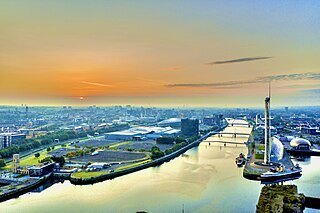
Glasgow is the most populous city in Scotland, located on the banks of the River Clyde in west central Scotland. The city is the third-most-populous city in the United Kingdom and the 27th-most-populous city in Europe. In 2022, it had an estimated population as a defined locality of 632,350 and anchored an urban settlement of 1,028,220.
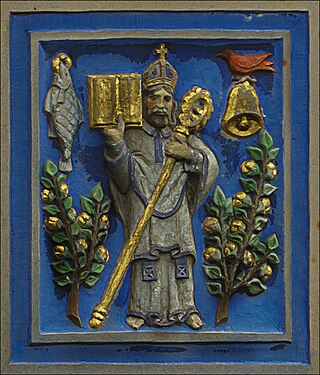
Kentigern, known as Mungo, was a missionary in the Brittonic Kingdom of Strathclyde in the late sixth century, and the founder and patron saint of the city of Glasgow.
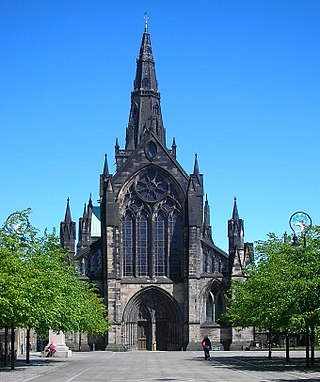
Glasgow Cathedral is a parish church of the Church of Scotland in Glasgow, Scotland. It is the oldest cathedral in mainland Scotland and the oldest building in Glasgow. The cathedral was the seat of the Archbishop of Glasgow, and the mother church of the Archdiocese of Glasgow and the province of Glasgow, until the Scottish Reformation in the 16th century. Glasgow Cathedral and St Magnus Cathedral in Orkney are the only medieval cathedrals in Scotland to have survived the Reformation virtually intact. The medieval Bishop's Castle stood to the west of the cathedral until 1789. Although notionally it lies within the Townhead area of the city, the Cathedral grounds and the neighboring Necropolis are considered to be their own district within the city.

Townhead is a district within the city of Glasgow, Scotland. It is one of Glasgow's oldest areas, and contains two of its major surviving medieval landmarks – Glasgow Cathedral and the Provand's Lordship.
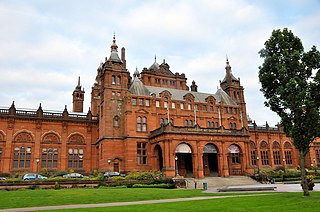
Kelvingrove Art Gallery and Museum is a museum and art gallery in Glasgow, Scotland, managed by Glasgow Museums. The building is located in Kelvingrove Park in the West End of the city, adjacent to Argyle Street. Kelvingrove Art Gallery and Museum is one of Scotland's most popular museums and free visitor attractions.
Sir William Burrell was one of the world's great art collectors. He and his wife Constance, Lady Burrell (1875–1961), created a collection of over 8,000 artworks which they gave to their home city of Glasgow, Scotland, in 1944, in what has been described as 'one of the greatest gifts ever made to any city in the world'. It is displayed at the Burrell Collection museum in Glasgow.

This article is intended to show a timeline of the history of Glasgow, Scotland, up to the present day.
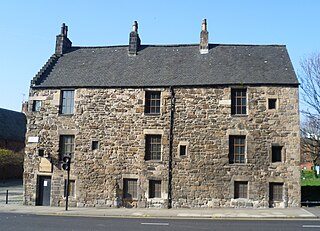
Provand's Lordship is a medieval historic house museum in Glasgow, Scotland, located in the Townhead area at the top of Castle Street within sight of Glasgow Cathedral and next to the St Mungo Museum of Religious Life and Art.
The city of Glasgow, Scotland, has many amenities for a wide range of cultural activities, from curling to opera and from football to art appreciation; it also has a large selection of museums that include those devoted to transport, religion, and modern art. In 2009 Glasgow was awarded the title UNESCO Creative City of Music in recognition of its vibrant live music scene and its distinguished heritage. Glasgow has three major universities, each involved in creative and literary arts, and the city has the largest public reference library in Europe in the form of the Mitchell Library. Scotland's largest newspapers and national television and radio companies are based in the city.

Easterhouse is a suburb of Glasgow, Scotland, 6 miles (10 km) east of the city centre on land gained from the county of Lanarkshire as part of an expansion of Glasgow before the Second World War. The area is on high ground north of the River Clyde and south of the River Kelvin and Campsie Fells.

The Bishop's Castle was a medieval castle in Glasgow, Scotland. It stood to the west of Glasgow Cathedral, covering much of the present day Cathedral Square. The castle served as the residence of the Archbishops of Glasgow until 1689. Following the Glorious Revolution, the castle became the property of the Crown. It fell into disrepair during the 18th century, having been used as a quarry from 1755, and the site was cleared in 1789 to make way for the Glasgow Royal Infirmary.

Christ of Saint John of the Cross is a painting by Salvador Dalí made in 1951 which is in the collection of the Kelvingrove Art Gallery and Museum, Glasgow. It depicts Jesus Christ on the cross in a darkened sky floating over a body of water complete with a boat and fishermen. Although it is a depiction of the crucifixion, it is devoid of nails, blood, and a crown of thorns, because, according to Dalí, he was convinced by a dream that these features would mar his depiction of Christ. Also in a dream, the importance of depicting Christ in the extreme angle evident in the painting was revealed to him.

Cathedral Square is a public square in the city of Glasgow, Scotland. Cathedral Square and precinct is situated adjacent to Glasgow Cathedral on High Street/Castle Street at John Knox Street. Nearby are many famous Glasgow landmarks such as Provand's Lordship, Glasgow Royal Infirmary, the Necropolis, the ceremonial Barony Hall of Strathclyde University, and the Glasgow Evangelical Church at the Square. It is one of six public squares and precincts in the city centre.

The city of Glasgow, Scotland is particularly noted for its 19th-century Victorian architecture, and the early-20th-century "Glasgow Style", as developed by Charles Rennie Mackintosh.

Provan Hall is a historic place composed of two buildings built about the 15th century and situated in Auchinlea Park, Easterhouse, Glasgow. It is owned by the National Trust for Scotland and leased by Glasgow City Council. The two parallel buildings, enclosing a courtyard, are protected as a category A listed building. The building has recently been renovated and now operates as a small museum. It is managed by Provan Hall Community Management Trust. It has been used as a set for filming ‘Outlander’.

Events from the year 1993 in Scotland.
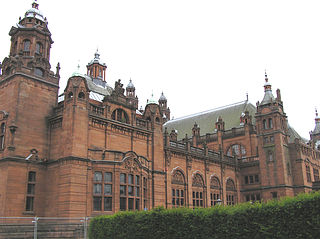
Glasgow Museums is the group of museums and galleries owned by the City of Glasgow, Scotland. They hold about 1.6 million objects including over 60,000 art works, over 200,000 items in the human history collections, over 21,000 items relating to transport and technology, and over 585,000 natural history specimens. They are managed by Glasgow Life, an 'arms length' external organisation contracted by Glasgow City Council to provide cultural, sporting and learning activities in the city.

Dr Elspeth King is a Scottish curator, writer and social historian. She is known for her role as curator of social history at the People's Palace Museum in Glasgow, as Director the Stirling Smith Art Gallery and Museum, and for her scholarship on the Scottish Suffrage movement.
Etheldreda (Dreda) Holstein Boyd (1879–1975) was a writer and antiquarian from Glasgow. She was one of the first female members of the Old Glasgow Club.
























